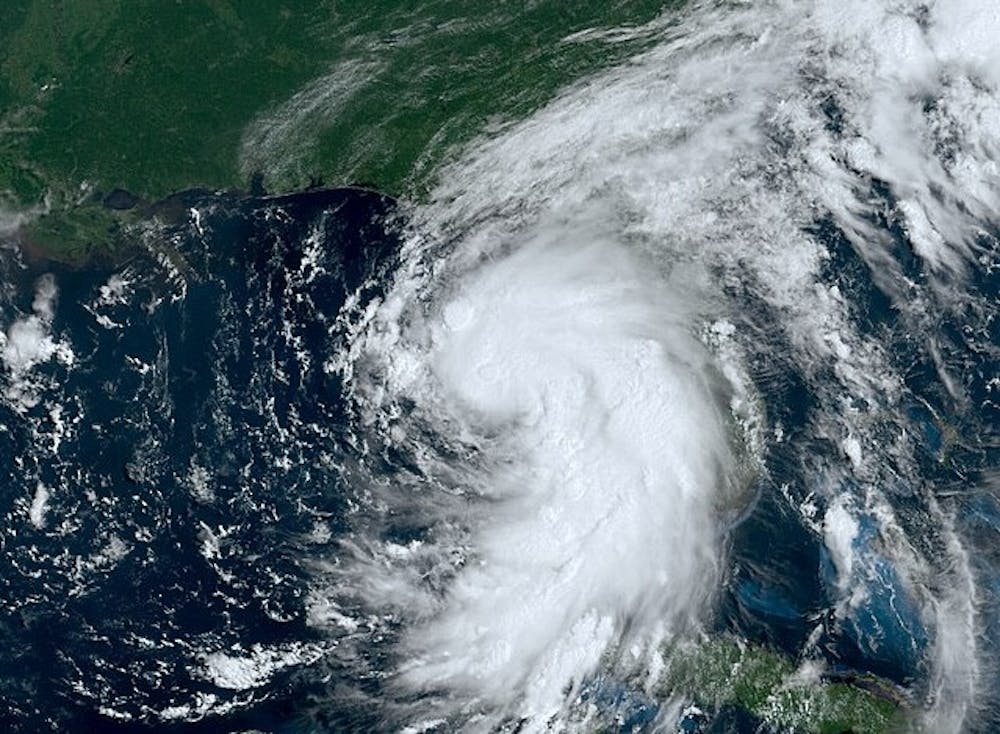SEPTEMBER 30, 2024 – Without being on the ground . . . er, in the water . . . a person can’t fully grasp the devastation that visited parts of the American Southeast late last week. Faster than you can say “flash flood” 10 times, we who weren’t affected directly will be on to other stuff, such as “football.” But not so fast: no matter where we live, we should have heightened and continuing concern for the correlation between record warm seawater and extreme weather. Most of the worst recent devastation occurred in politically red states, where climate change denialism has long been associated with the strip-government-bare objective of Republican politics. “Government,” of course, includes NOAA (National Oceanic and Atmospheric Administration), the NHC (National Hurricane Center), the NWS (National Weather Service) and FEMA (Federal Emergency Management Agency). Just for kicks someone should conduct some computer modeling to determine the added cost in lives and economic losses in the absence of these government services—both historically and in the future, given additional modeling that accounts for increased frequency and intensity of violent weather.
At the core of the problem, however, is denial of anthropogenic climate change. I remember clearly a conversation three years ago with climate change deniers whose skepticism centered on the funding sources of climatologists, 97% of whom share the common conclusion—based on peer-reviewed scientific research—that the current climate change is caused by the burning of fossil fuels. Lost on the deniers was the source of funding of the 3% outliers: ExxonMobil; the Koch Brothers; and the CATO Institute and the Heritage Foundation, prominent funders of conservative causes, including laissez-faire do-whatever-you-want-to-the-earth capitalism.
Sorry folks, but the verdict is in and has been for quite some time. Climate change is real and likely accelerating, though the precise rate of the approaching catastrophe is uncertain. The source of oceanic and atmospheric change—and thus of climate change—is all but scientifically certain, pinned as it is on isotope[1] analyses of carbon dioxide. The direct effects—warmer air (overall) and seawater; disruption of ocean currents—are scientifically identifiable and measurable. The indirect effects are often dramatically tangible and visible—melting permafrost, glaciers and polar ice—and, drumroll, drumroll . . . bigger, more intense storms fueled by warmer seawater.
But if you will recall from a recent post on this blog, back when our region was choking on smoke from Western wildfires I encountered the golfer whose cavalier reaction was, “We’ve had wild fires for millions of years.” Similarly, climate change deniers standing hip deep in floodwaters will refer to the Age of Noah and Gilgamesh. “It’s happened before.” Yes, but not anthropogenically. At a minimum, shouldn’t deniers agree to pay higher property casualty insurance premiums? Should they not decline no- or low-interest loans from the gov’m’nt the next time a hurricane rages up one coast or the other of Florida, where grand-standing, climate-denying Republican Governor DeSantis signed a bill last March expunging the term “climate change” from all state laws?
Yet rather than face the biggest of the big issues confronting civilization, we gorge ourselves on a steady diet of “red meat news,” such as the falsehood that Haitian immigrants kill neighborhood pets.
It’s time for us to grow up. To emerge from our tabloid mentality and Wild West adolescence and mature into an electorate of informed citizens. We need to face the loudest music of our times—climate change—and concurrently juggle a host of other major issues that so far have eluded discussion or even mention in the current campaign cycle, presidential and congressional; national, regional and local.
May the horrific scenes of devastation across six states shake us up as we count the days (36) to November 5.
Subscribe to this blog and receive notifications of new posts by email.
© 2024 by Eric Nilsson
[1] Several forms of an element that share the same number of neutrons but different number of protons in their nuclei.
